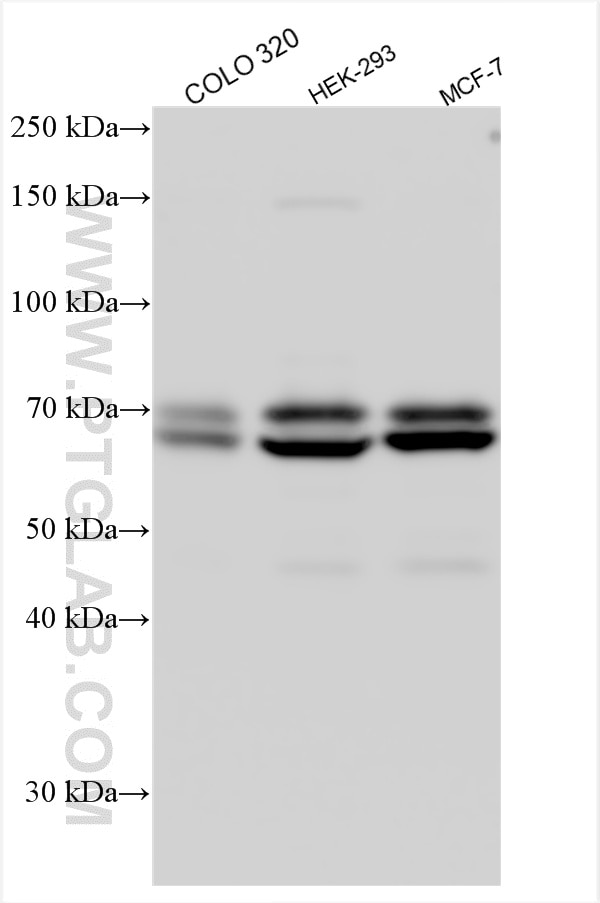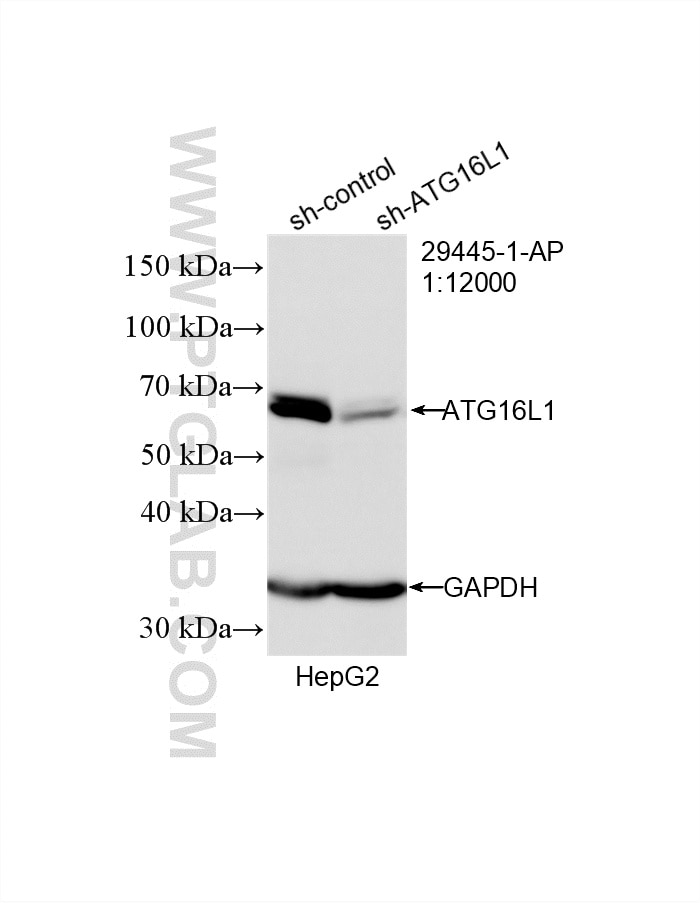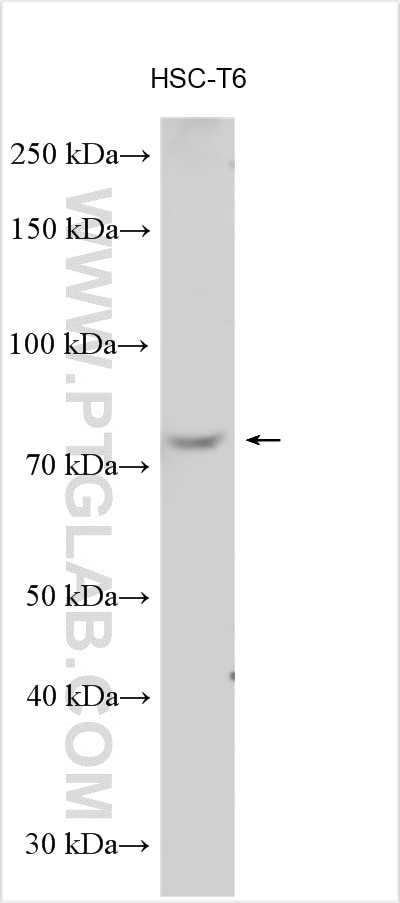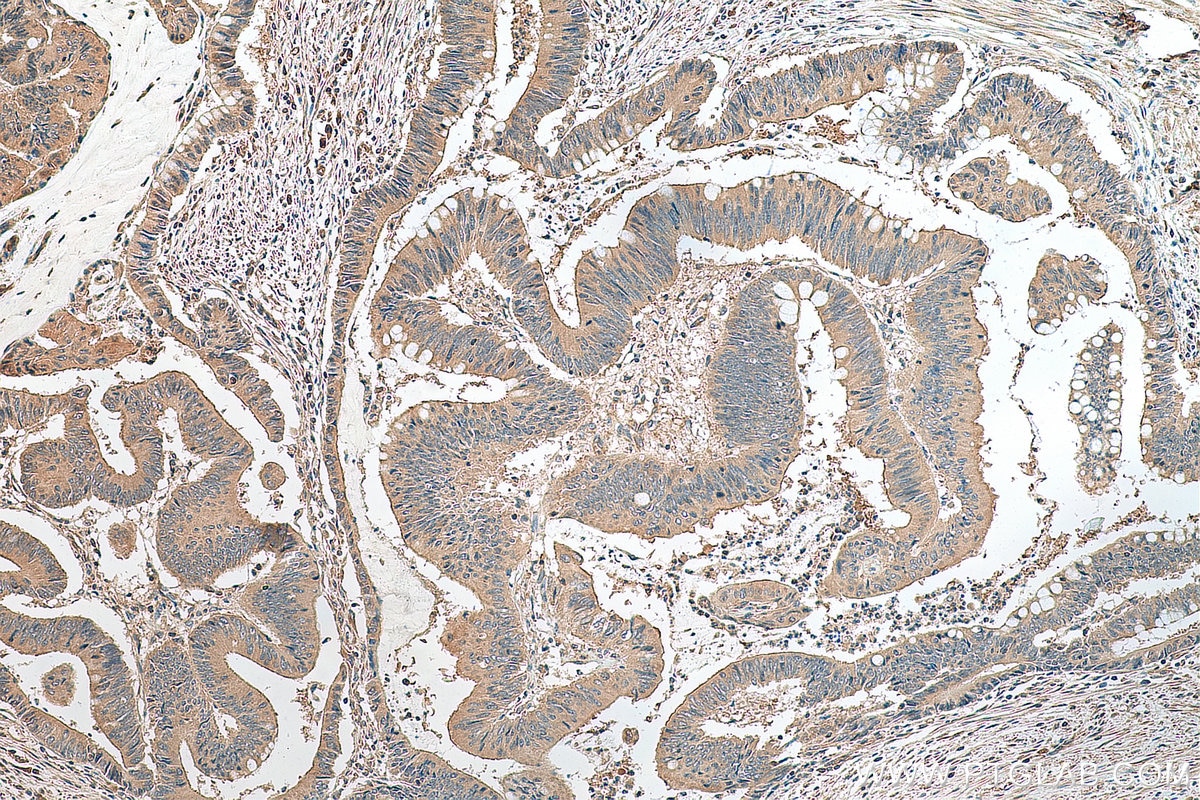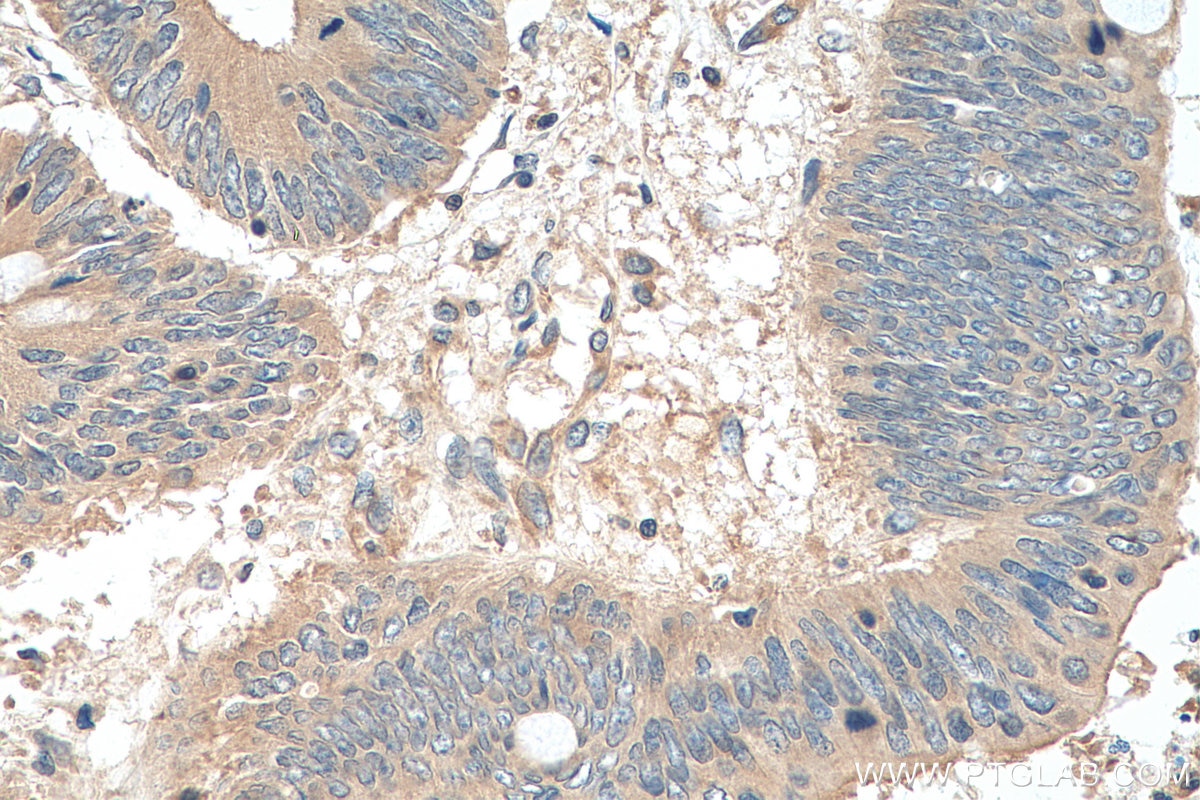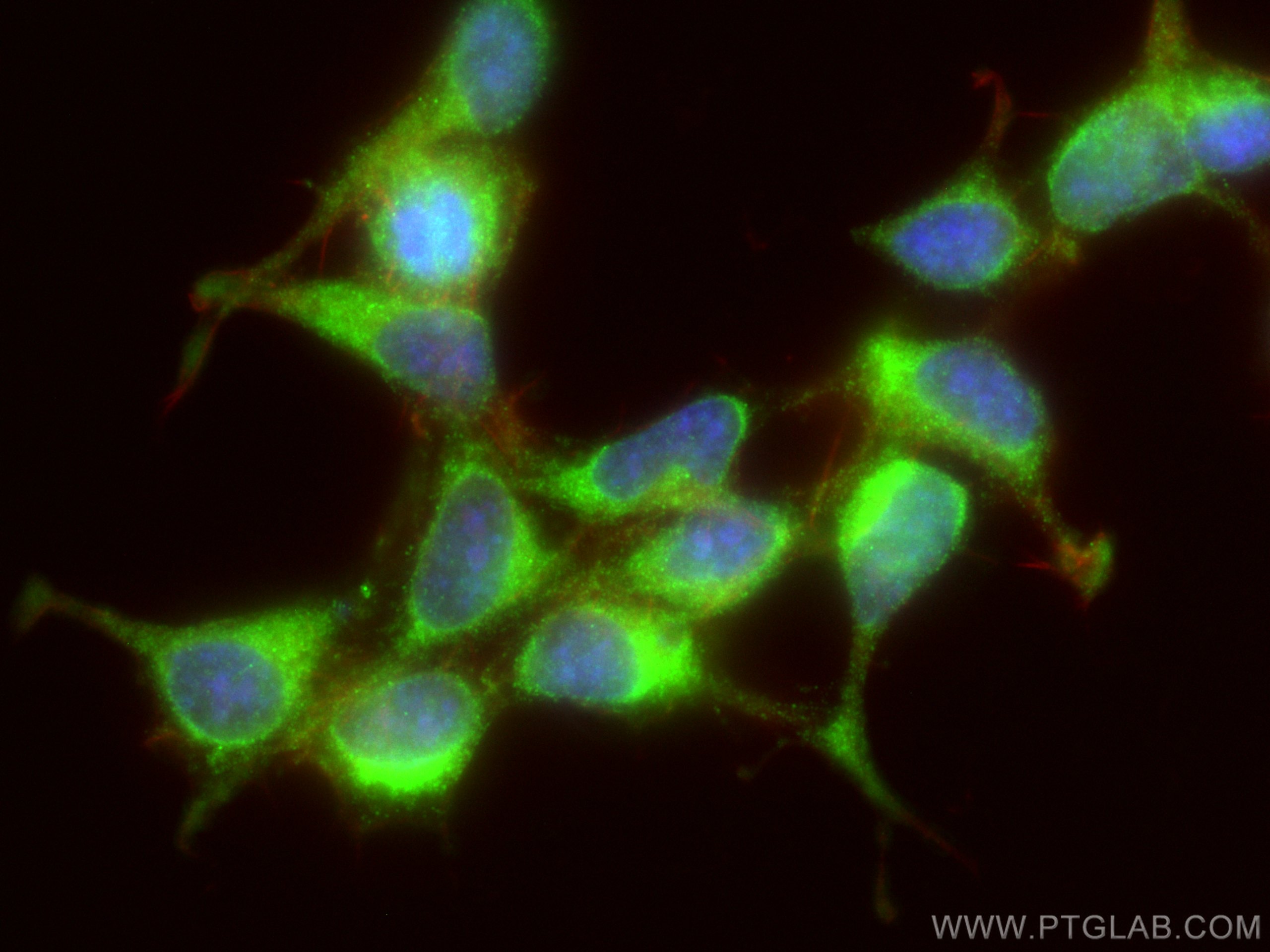- Phare
- Validé par KD/KO
Anticorps Polyclonal de lapin anti-ATG16L1
ATG16L1 Polyclonal Antibody for WB, IHC, IF/ICC, ELISA
Hôte / Isotype
Lapin / IgG
Réactivité testée
Humain, rat, souris
Applications
WB, IHC, IF/ICC, ELISA
Conjugaison
Non conjugué
N° de cat : 29445-1-AP
Synonymes
Galerie de données de validation
Applications testées
| Résultats positifs en WB | cellules COLO 320, cellules HEK-293, cellules HepG2, cellules HSC-T6, cellules MCF-7 |
| Résultats positifs en IHC | tissu de cancer du côlon humain, il est suggéré de démasquer l'antigène avec un tampon de TE buffer pH 9.0; (*) À défaut, 'le démasquage de l'antigène peut être 'effectué avec un tampon citrate pH 6,0. |
| Résultats positifs en IF/ICC | cellules HEK-293, |
Dilution recommandée
| Application | Dilution |
|---|---|
| Western Blot (WB) | WB : 1:1000-1:8000 |
| Immunohistochimie (IHC) | IHC : 1:200-1:800 |
| Immunofluorescence (IF)/ICC | IF/ICC : 1:50-1:500 |
| It is recommended that this reagent should be titrated in each testing system to obtain optimal results. | |
| Sample-dependent, check data in validation data gallery | |
Applications publiées
| WB | See 7 publications below |
| IHC | See 2 publications below |
| IF | See 2 publications below |
Informations sur le produit
29445-1-AP cible ATG16L1 dans les applications de WB, IHC, IF/ICC, ELISA et montre une réactivité avec des échantillons Humain, rat, souris
| Réactivité | Humain, rat, souris |
| Réactivité citée | Humain, souris |
| Hôte / Isotype | Lapin / IgG |
| Clonalité | Polyclonal |
| Type | Anticorps |
| Immunogène | ATG16L1 Protéine recombinante Ag31318 |
| Nom complet | ATG16 autophagy related 16-like 1 (S. cerevisiae) |
| Masse moléculaire calculée | 607 aa, 68 kDa |
| Poids moléculaire observé | 68-75 kDa |
| Numéro d’acquisition GenBank | BC000061 |
| Symbole du gène | ATG16L1 |
| Identification du gène (NCBI) | 55054 |
| Conjugaison | Non conjugué |
| Forme | Liquide |
| Méthode de purification | Purification par affinité contre l'antigène |
| Tampon de stockage | PBS with 0.02% sodium azide and 50% glycerol |
| Conditions de stockage | Stocker à -20°C. Stable pendant un an après l'expédition. L'aliquotage n'est pas nécessaire pour le stockage à -20oC Les 20ul contiennent 0,1% de BSA. |
Informations générales
Human ATG16L1 is a 607 amino acid protein (~68 kDa) comprising three major domains: the N‐terminal ATG5 binding domain (ATG5‐BD), the central coiled‐coil domain (CCD) and a predicted C‐terminal WD40‐domain. ATG16L1α and β (Atg16L1α, 66 kDa; and Atg16L1β, 68 kDa) are the major isoforms expressed in intestinal epithelium and macrophages , and all isoforms encode exon 9, which contains Thr 300. Atg16L1 mediates the cellular degradative process of autophagy and is considered a critical regulator of inflammation based on its genetic association with inflammatory bowel disease. ATG16L1 has been implicated in Crohn's disease. (PMID: 24553140, PMID: 22740627,PMID: 28685931)
Protocole
| Product Specific Protocols | |
|---|---|
| WB protocol for ATG16L1 antibody 29445-1-AP | Download protocol |
| IHC protocol for ATG16L1 antibody 29445-1-AP | Download protocol |
| IF protocol for ATG16L1 antibody 29445-1-AP | Download protocol |
| Standard Protocols | |
|---|---|
| Click here to view our Standard Protocols |
Publications
| Species | Application | Title |
|---|---|---|
J Nanobiotechnology Engineering exosomes derived from TNF-α preconditioned IPFP-MSCs enhance both yield and therapeutic efficacy for osteoarthritis | ||
Cell Signal Inhibition of XIST restrains paclitaxel resistance in breast cancer cells by targeting hsa-let-7d-5p/ATG16L1 through regulation of autophagy | ||
Food Funct EPA and DHA differentially coordinate the crosstalk between host and gut microbiota and block DSS-induced colitis in mice by a reinforced colonic mucus barrier. | ||
Anticancer Drugs Purvalanol A induces apoptosis and reverses cisplatin resistance in ovarian cancer | ||
Autophagy Regulation of N-Degron Recognin-Mediated Autophagy by the sars-cov-2 plpro ubiquitin deconjugase | ||
J Cell Mol Med CTSL Promotes Autophagy in Laryngeal Cancer Through the IL6-JAK-STAT3 Signalling Pathway |
Avis
The reviews below have been submitted by verified Proteintech customers who received an incentive for providing their feedback.
FH Boel (Verified Customer) (07-30-2025) | 25µg gastrocnemius muscle total protein extract from mdx mouse (dystrophin deficient mice that are used as a model for Duchenne muscular dystrophy) generated a strong band of full lenght protein plus multiple additional bands of lower molecular weight. 25µg of total protein extract from pooled wild type zebrafish 5 days post fertilization generated no protein bands.
 |
